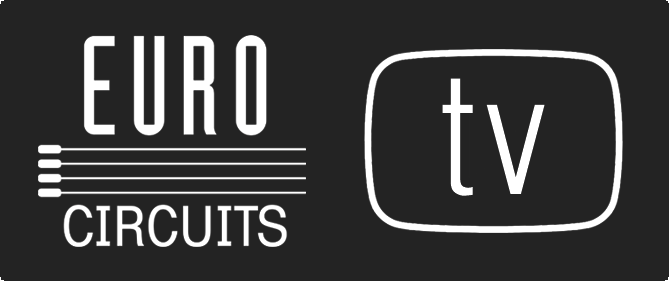Best Practices for Legend Print
Best practices for legend print: Smart designs reduce production errors
For some PCB designers, extensive component labelling is what makes the PCB complete as it defines the position and orientation for the assembly process. However, today most PCBs are assembled using automatic component placement machines and thus there is no need for the component references to be printed on the PCB. In this article, we explain the reasons and provide six essential practical tips for legend print.
The component reference designator, pin 1 marking of ICs, polarity of power supplies and diodes, pin assignment of pin headers and positions of jumpers are usually printed on the PCB. It is also common to print the name of the PCB, the revision status, logos etc., as well as warnings and safety instructions for commissioning, maintenance or repair.
The PCB manufacturer prints the desired legend on top of the soldermask in one of the final production steps. At Eurocircuits, we print white legend directly onto the soldermask of the PCB using an inkjet printer to ensure good legibility. After printing, the white lacquer is cured in a continuous oven. Here we explain legend print in detail.
The term “screen printing”, which is also commonly used, comes from the traditional method used to apply these labels.
The reference designator of the components, pin 1 markers, polarity etc. are valuable visual aids in the design process. Legend and marking the components can also help engineers’ during the design phase. For example, if measurements in the EMC laboratory reveal that a capacitor is too small, it can be found quickly and replaced.
Useful in design, but a risk of problems in production
What is helpful in the design stage can be problematic in production and a potential source for errors. This is why the PCB manufacturer removes legend in critical areas during the pre-production DFM checks, this is known as legend clipping.
See also:
- Eurocircuits PCB Design Guidelines for Legend Print
- Eurocircuits PCB Assembly Guidelines for Legend Print Clipping
The legend print is particularly tricky for the PCB assembly process. For example, reference designators between the solder pads of small SMD components can cause errors during solder paste printing because the legend print prevents the stencil from getting close enough to the soldering surfaces. There is also a risk that the part may not lie flat on the PCB. This results in poor solder joints or raised components, the so-called tombstoning effect.
For this reason, professional PCBA manufacturers generally remove all legend in order to minimise the risk of errors and ensure reliable soldering results. In addition, the EMS does not need this information on the PCB; the manufacturer takes this data from the CPL (components placement list).
Here you can see the rules for legend clipping when Eurocircuits assembles the PCBs.
We strongly recommend that you follow the rules for legend placement that apply at your PCBA manufacturing partner.
The following six tips will ensure that the data is correct and that the production process runs smoothly from the start.
- Do not place legend on any exposed copper surfaces, component pads, holes or cutouts.
- Follow the font size specifications of the PCB manufacturer. For Eurocircuits, this is a minimum height of 1 mm and a minimum line width of 0.1 mm.
- Maintain the minimum clearances to the PCB edge, component solder pads, holes and cutouts etc as required by the PCB Assembler to avoid legend clipping.
- Avoid legend under the body of SMD components.
- Position important operating information where the legend is not covered by components.
- Document information for component assembly in the CPL data not directly on the PCB.
See also:









